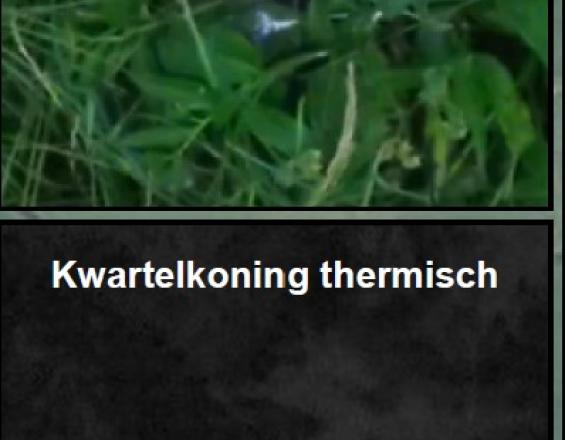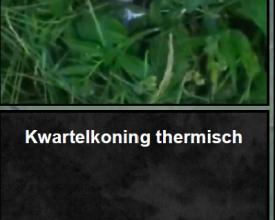
Utilización de un dron para localizar al guión de codornices (Crex crex)

La reserva "Langenholte" está situada en las llanuras aluviales del río Vecht (Zwolle). Una característica importante del lugar es la presencia de guión de codornices. El factor clave para determinar un hábitat adecuado para la cría es la estructura de la vegetación, que debe proporcionar suficiente cobertura para las aves a partir de abril. Otra característica importante del lugar es la Fritillaria cabeza de serpiente (Fritillaria meleagris), una especie de prados de heno de tierras bajas (H6510).
El objetivo de gestión de la zona es crear unas condiciones óptimas para la supervivencia del guión de codornices y para mantener la pradera en un buen estado de conservación. Sin embargo, combinar estos dos objetivos parece difícil en la práctica debido a requisitos contradictorios. Para conocer mejor los hábitos del guión de codornices y adoptar así medidas más específicas, experimentamos con el uso de una cámara térmica montada en un dron. El dron con la cámara térmica se utilizó con éxito para localizar al guión de codornices. A partir de ahí, fue posible aplicar medidas más específicas para proteger los nidos.
Impactos
Además de poder localizar mejor al guión de codornices, el uso del dron también garantiza menos perturbaciones. Las imágenes del dron son de buena calidad y el guión de codornices se reconoce claramente en ellas.
El uso del dron también es positivo para el agricultor que gestiona el pastizal. Si al agricultor sólo se le permite segar la hierba una vez al año, la calidad de esta hierba es menor que si se le permite segarla dos veces. Si se pueden designar con mayor precisión las zonas que se deben dejar de segar para proteger al guión de codornices, el agricultor se beneficiará al poder segar una superficie mayor. De este modo, también se apoya más la protección del guión de codornices.
Aún existen algunos problemas para utilizar el dron en la gestión anual:
- La cámara térmica sólo funciona si la vegetación no se ha calentado. Por lo tanto, hay que volar antes del amanecer.
- No todo el mundo puede pilotar un dron de este tipo
- El coste del dron y la cámara térmica es relativamente alto
Debido a los avances técnicos en el campo de los drones, es probable que estas preocupaciones disminuyan en el futuro. A pesar de sus limitaciones actuales, es una técnica valiosa para estudiar el comportamiento del guión de codornices y para conocer mejor el hábitat y los requisitos de gestión de esta especie de ave.
Más información sobre la gestión de áreas protegidas en https://mpg.eurosite.org/.
